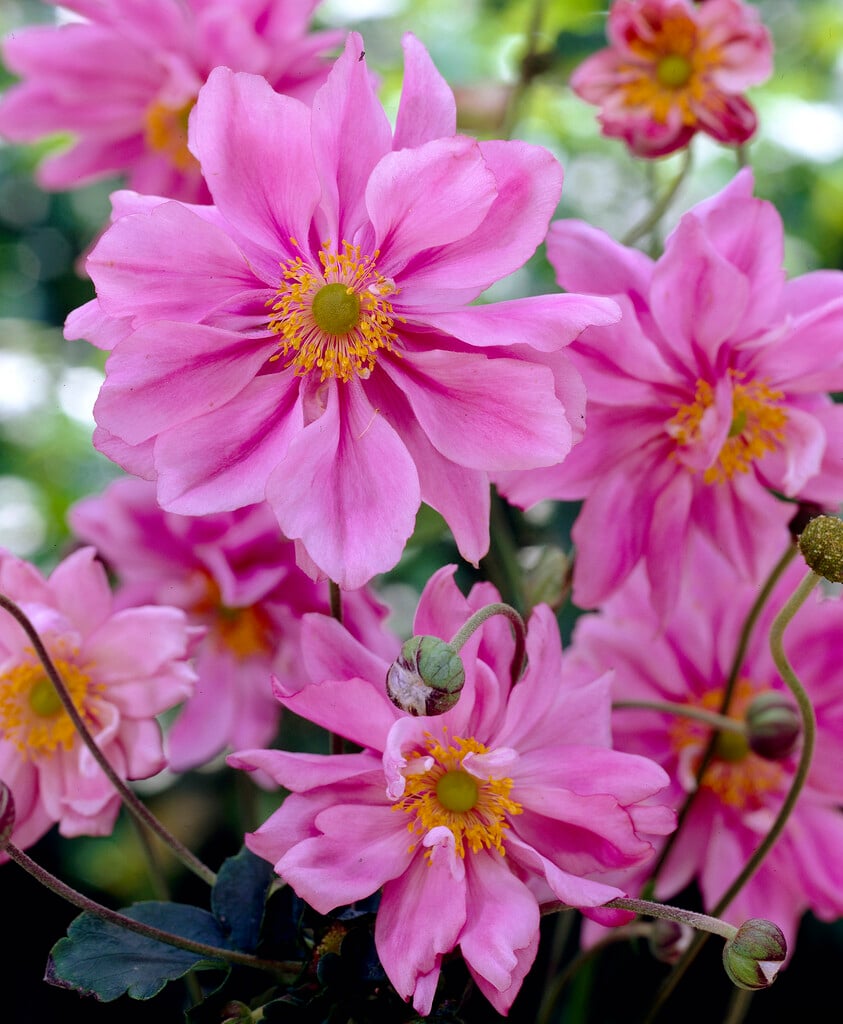Anemone × hybrida 'Lady Gilmour' Wolley-Dod
Japanese anemone 'Lady Gilmour'
Clump-forming perennial about 1m tall, with distinctive mid-green, 3-lobed leaves that have crisped margins when young. Semi-double pale pink flowers 6cm across have about 12 narrow, somewhat twisted petals, and a central boss of yellow stamens, appear on slender stems from summer to autumn
Size
Ultimate height
1–1.5 metresTime to ultimate height
2–5 yearsUltimate spread
0.1–0.5 metresGrowing conditions
Moisture
Moist but well–drainedpH
Acid, Alkaline, NeutralColour & scent
| Stem | Flower | Foliage | Fruit | |
| Spring | Green | |||
|---|---|---|---|---|
| Summer | Pink | Green | ||
| Autumn | Pink | Green | ||
| Winter |
Position
- Full sun
- Partial shade
Aspect
North–facing or East–facing or South–facing or West–facing
Exposure
Exposed or Sheltered Hardiness
H7Botanical details
- Family
- Ranunculaceae
- Native to GB / Ireland
- No
- Foliage
- Deciduous
- Habit
- Clump forming
- Genus
Anemone are herbaceous perennials with fibrous, rhizomatous or tuberous rootstocks, palmately lobed leaves and saucer-shaped, usually 5-petalled flowers
- Name status
Accepted
How to grow
Cultivation
Will grow in any garden soil but avoid excessive winter wet, dislikes being moved around. Can spread rapidly once established and has the potential to become a nuisance. See anemone cultivation
Propagation
Propagate by division in early spring or autumn, or propagate by root cuttings
Suggested planting locations and garden types
- Cottage and informal garden
- Coastal
- City and courtyard gardens
- Wildlife gardens
- Flower borders and beds
Pruning
Cut back flowered stems in late autumn
Pests
May be susceptible to leaf eelworms and damage from caterpillars and slugs
Diseases
May be susceptible to Powdery mildews
Love gardening
Sign up to receive regular gardening tips, inspiration, offers and more
View our Privacy Policy
Get involved
The Royal Horticultural Society is the UK’s leading gardening charity. We aim to enrich everyone’s life through plants, and make the UK a greener and more beautiful place.

